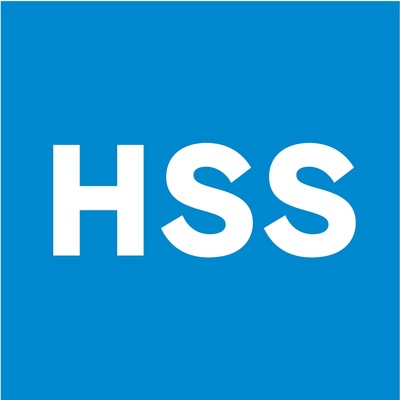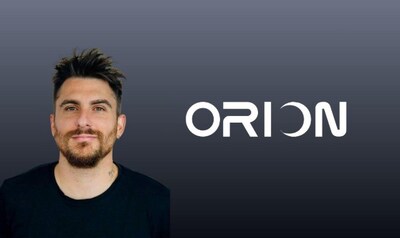New Study Finds Surface Imaging Provides Highly Accurate Models of The Body for Scoliosis Surgeons
Press Releases
Mar 24, 2022
The technique, called 3dMD, uses an array of cameras to generate nearly instantaneous images of the torso, which can guide treatment plans.
CHICAGO, March 24, 2022 /PRNewswire/ — A new study that includes researchers at Hospital for Special Surgery (HSS) in New York City has found that a technique called 3dMD, which uses an array of highly sensitive cameras and can image the entire body in a fraction of a second, generates extremely accurate and reliable models of the torso that can guide the management of adolescents with scoliosis.
The findings, presented today at the American Academy of Orthopaedic Surgeons (AAOS) 2022 Annual Meeting, shows that the ultrafast cameras produce scans of the surface of the body that complement internal images generated by low-dose x-ray. Because 3dMD does not rely on ionizing radiation, the investigators believe the technology may help scoliosis patients avoid many of the repeated and potentially harmful x-rays that conventional care require.
Surface topography and internal imaging work together to provide a much fuller picture of how scoliosis affects the body, according to Roger F. Widmann, MD, chief of the Pediatric Orthopedic Surgery Service at HSS and the senior researcher on the study. “When you see someone with a spinal deformity, you’re not necessarily visualizing the shape of the spine underneath,” he said. “Three-dimensional (3-D) surface scanning is analogous to what you see visually, whereas x-rays or MRI are often much different from what you see on the surface. Both approaches are important, but the information they provide is quite different.”
Howard J. Hillstrom, PhD, a biomechanical engineer at HSS and co-principal investigator on the project, says the 30-camera array can generate a full image of a standing person in under two milliseconds—fast enough to eliminate any blurring from even the slightest movement in any direction. “It gives us very accurate information to begin with, and it’s important to start with sound data,” Dr. Hillstrom noted.
What was previously unknown was how well these images of the body’s surface conform to the anatomy beneath the skin. This relationship is critical for 3dMD to be useful in the clinic as a way to guide treatment for scoliosis, which affects between 2% and 3% of youth in the United States, or 6 to 9 million people.
Treatment for scoliosis frequently involves the use of braces to correct the curvature of the spine—a measurement called the Cobb angle—but in the most severe cases, surgery may be necessary.
Dr. Hillstrom, who describes the image as a “large, 3-D selfie,” said these results “give us the green flag to study spinal pathology and the effects of treatments for different severities of scoliosis” in ways that weren’t possible previously.
For clinicians, he added, “It’s great to have objective tools to support the patient-reported outcomes that we use.”
For the study, the researchers compared images gathered by 3dMD with those produced by a next-generation x-ray system called EOS. A total of 46 youths participated in the study, 26 of whom had been diagnosed with adolescent idiopathic scoliosis (mean age, 14.7 years; 14 female, 12 male) and 20 who did not have the condition (mean age, 14.6 years; 9 female, 11 male).
The 3dMD images demonstrated extremely high reliability, particularly for linear geometric measurements of the surface of the subjects. “The measurements generated from the 3-D scans were used to create unique volumetric measures of truncal asymmetry, which demonstrated very high correlations with patient-reported self-image,” Dr. Widmann said.
Dr. Hillstrom noted the post-processing software that employs artificial intelligence (AI) is the secret behind the accuracy of the camera array. “AI fills in the blanks very quickly. It helps to identify anatomical regions and provide a mathematical approach to organizing the topographic data showing you the head, neck, trunk and pelvis—from outside of the body. You can uncover details you wouldn’t normally be able to see with the naked eye or with the use of conventional radiology.”
As the 3dMD system moves into the clinic, the technology will help surgeons better predict both the cosmetic and functional outcomes of the various procedures for scoliosis. “You can use the system to assess the efficacy of different surgical techniques based on how well you’re creating symmetry of the surface of the torso,” Dr. Widmann said. “This technology offers a quick and easy way to objectively assess surface symmetry as well as global spine range of motion, and both measures are really important to assess after scoliosis surgery.”
Authors: Alon Wolf, PhD; Ankush Thakur, MS, BS, (HSS), Benjamin N. Groisser, BA (Technion), Howard J. Hillstrom, PhD (HSS), Kyle Morse, MD, Matthew E. Cunningham, MD, PhD, FAAOS (HSS), Michael T. Hresko, MD, FAAOS (Boston Children’s Hospital), Roger F. Widmann, MD, FAAOS (HSS), Ron Kimmel, DPHIL (OXON).
About HSS
HSS is the world’s leading academic medical center focused on musculoskeletal health. At its core is Hospital for Special Surgery, nationally ranked No. 1 in orthopedics (for the 12th consecutive year), No. 4 in rheumatology by U.S. News & World Report (2021-2022), and the best pediatric orthopedic hospital in NY, NJ and CT by U.S. News & World Report “Best Children’s Hospitals” list (2021-2022). In a survey of medical professionals in more than 20 countries by Newsweek, HSS is ranked world #1 in orthopedics for a second consecutive year (2022). Founded in 1863, the Hospital has the lowest complication and readmission rates in the nation for orthopedics, and among the lowest infection rates. HSS was the first in New York State to receive Magnet Recognition for Excellence in Nursing Service from the American Nurses Credentialing Center five consecutive times. An affiliate of Weill Cornell Medical College, HSS has a main campus in New York City and facilities in New Jersey, Connecticut and in the Long Island and Westchester County regions of New York State, as well as in Florida. In addition to patient care, HSS leads the field in research, innovation and education. The HSS Research Institute comprises 20 laboratories and 300 staff members focused on leading the advancement of musculoskeletal health through prevention of degeneration, tissue repair and tissue regeneration. The HSS Innovation Institute works to realize the potential of new drugs, therapeutics and devices. The HSS Education Institute is a trusted leader in advancing musculoskeletal knowledge and research for physicians, nurses, allied health professionals, academic trainees, and consumers in more than 145 countries. The institution is collaborating with medical centers and other organizations to advance the quality and value of musculoskeletal care and to make world-class HSS care more widely accessible nationally and internationally. www.hss.edu.
![]() View original content to download multimedia:https://www.prnewswire.com/news-releases/new-study-finds-surface-imaging-provides-highly-accurate-models-of-the-body-for-scoliosis-surgeons-301508802.html
View original content to download multimedia:https://www.prnewswire.com/news-releases/new-study-finds-surface-imaging-provides-highly-accurate-models-of-the-body-for-scoliosis-surgeons-301508802.html
SOURCE Hospital for Special Surgery



